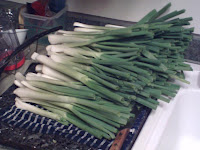 I went to the SAS Institute to learn more about SAS programming, and statistical applications relevant to the type of research I am involved in. It was a whirlwind trip, but, on the whole, well worth the experience for me. Compared to other class members, it became quickly obvious that I was at a huge disadvantage in knowing almost nothing about programming in SAS. My only saving grace was that I have had a lot of statistical training in graduate school many moons ago, back when we had to do all of our calculations by hand, which meant that we really had to know our stuff.
I went to the SAS Institute to learn more about SAS programming, and statistical applications relevant to the type of research I am involved in. It was a whirlwind trip, but, on the whole, well worth the experience for me. Compared to other class members, it became quickly obvious that I was at a huge disadvantage in knowing almost nothing about programming in SAS. My only saving grace was that I have had a lot of statistical training in graduate school many moons ago, back when we had to do all of our calculations by hand, which meant that we really had to know our stuff.On the programming side, my experience was something like walking in to a second year language course without having taken the first year course. I winged it the best I could, but when we did the exercizes, even though I knew what was going on from the statistical side, I was hopeless in trying to plug in the proper commands, because I was completely unfamiliar with the syntax. The teacher let me go to the answer pages, and type out the answers, with the hope that I could get something from the experience of typing out the commands. I was strongly encouraged to come back and take their Programming I course. Fat chance that will ever happen. However, there is a remote chance that I will be supported in doing some self-tutoring on line.
During the training, I was intrigued by how much homage was paid to the one of the original founders and current CEO of SAS, Jim Goodnight, who is generally regarded as the wealthiest man in North Carolina. It sort of reminded me of when I worked at Walmart...all the stuff we learned about Sam Walton. Apparently, SAS is one of those rare companies that has made a point of taking care of its employees through the years, and this has paid off handsomely for the company. I asked how their company was coping with the economic downturn, because financial institutions are among their bread-and-butter clients. They apparently made the decision to put everyone's salary on hold for the time being, as opposed to laying anyone off. Nobody was complaining. They are all glad to have their jobs. The campus (Training center: Bldg F) is large and very attractive, nestled in the pines. Cary, NC has grown enormously and now exceeds 120,000 in population...and being the bedroom community that it is for the Raleigh/Durham area, doesn't even have a downtown...so I was told. The percent of people living there that have advanced degrees is probably as high as any location of its size in the U.S. All in all, I was quite happy to have had the experience, and the greater exposure to SAS and what it has to offer in the way of statistical packages.










